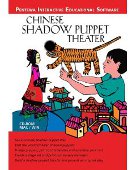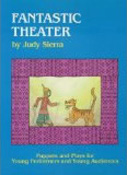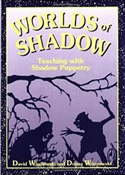Scripts
Rather than giving scripts,following are sources for some and instructions how to easily create your own from short stories and picture books. That way you can have a script from whatever story you want.
Traditional beginnings and endings for Himalayan region stories.
We usually begin traditional stories with "Once upon a time..." and end them with "...and they all lived happily every after."
In Tales of Kathmandu, Sakya & Griffith give the traditions in Nepal. "Every tale has two standard ways of starting: "Aeka desh ma" (Once in a far-off country) or "para purba kalma" (Once upon a time). Every tale, whether comic or tragic, is terminated by a happy poetic formula expressing good wishes for the teller and listeners in a typical manner, the translation of which into English has no relation with the text, but the word coinage of which in Nepali is most interesting:
"Bhannae lai ful ko mala," (the teller will receive a garland of flowers,)
"Sunne lai sun ko mala," (The listener will receive a golden chain.)
"Yo katha baikuntha jala" (May this story go to heaven.)
"Bhanne bela tat-tatai aiejala." (Let it come freshly every time it is recalled.)
In stories belonging to the Newar commjunity the ending is specially designed so that it has a rhyme on the first and last words of the phrase: "Aulin chiya bakhan thullin." (That's all of the story.)"
The Jataka Tales usually begin with something like, "This I heard at this time and this place when the Buddha was asked..."
and end with, "...the audience is glad/delighted in their hearts."
Methods of Creating Scripts
- Read or tell the story and have students do it from memory.
- Read or tell the story, but before they act it out, as a group, rehearse the parts together (see kindergarten page)
- Have one or more narrators read it, while the others act it out. The characters can say their lines or mime it. Narrator parts can be divided up by page or alternating lines/sentences. (example below)
- Have a student become a storyteller who with great relish tells the story without a script. I also sometimes have the students who are in other plays, be the village audience sitting on the edges of the staging area and reacting to the story.
- Teach students about scripts and playwriting and have them do it.
More details on writing a script with narrators.
- Choose your story. Ones in a picture book are the easiest.
- Write down the characters in the play. To determine how many narrators there are, consider how much of the story is narrative and how many students you have that need to be in the play. and/or want to be a narrator. Unlike the characters, they don't have to memorize, BUT they need to hold the audience's attention. The narrators can cue students that have forgotten their lines. I like to teach them how to do it so the audience might not even realize the student forgot his/her line. If the pig was supposed to comment on the clouds, the narrator might add, "Ushi looked at the clouds and wondered is it was going to rain."
- Write/copy the story dividing up the narrator's lines and adding in the character lines using a typical script format.
For example, here the opening to a Japanese play I created that would also work for any country familiar with the Chinese calendar: Fourth graders made shadow puppets for this and each made more than one.
Why Cats Chase Rats or
 How the Twelve Animals were Chosen for the Years How the Twelve Animals were Chosen for the Years (copyright 2009 Diana D'Émeraude)
NARRATOR 1: Long ago when time was just beginning, a god called Kami-sama lived on a mountain deep in the forest.
NARRATOR 2: The animals had asked that something be done so that people would show them more respect.
NARRATOR 3: He had decided to let 12 of them represent the years and had created a special contest.
NARRATOR 4: Kami-sama stayed up late writing invitations to all of the animals.
KAMI-SAMA: Hm... Let me check this:
Dear do-o-butsu tomodachi animal friends,
"The first 12 animals that arrive at my house on the morning of the first day of the year, will be honored by being the animal of the year once every twelve years. Sincerely, Kami-sama.
NARRATOR 1: After he had written all the letters, he opened the window, threw the letters into the air,
NARRATOR 2: and let the kaze, the wind, deliver them to the animals.
NARRATOR 3: The letters flew to every yama, mountain, kawa, river, hatake, and valley.
NARRATORY 4: On New Year's Eve, all the animals received their invitations: Kaeru, the frog; Uma, the horse; Zo, the elephant;
NARRATOR 1: Saru, the monkey; Nekko, the cat; Kuma, the bear;
NARRATOR 2: Tatsu, the dragon; Kirin, the unicorn; Tora, the tiger;
NARRATOR 3: Buta, the pig; Hebi, the snake...
NARRATOR 4: In short, all the animals of the world received a letter.
NARRATOR 1: Neko, the cat, was too lazy to read it himself,
NARRATOR 2: so he asked his friend, Nezumi, the rat to read it for him.
NARRATOR 3: Nezumi, however was mischievious
NARRATOR 4: and really wanted to be one of those chosen.
NEKKO: Nezumi, I'm still in the middle of my cat nap. Could you read the note for me?
NEZUMI: Of course, dear friend. It's from Kami-sama. He is having a race on the second day of the year for all of the animals. The first 12 to arrive will be honored once each 12 years.
NEKKO: Thank you for reading that. Tomorrow is the first. I'll sleep all day and be ready to rush in the second...
(to be continued)
*******************************
I hope this helps you create your own foktale scripts.
***************************
Here are some sources for ready-made scripts.
   
Nancy L Barboza, in the 2008 NEH Literatures, Religions, and Arts of the Himalayan Region Institute, developed two reader's theatre scripts for the second grade.
Two Reader's Theatre Jataka Scripts
The following website has reader's theatre scripts for the classroom. Some of the stories are from India and at least two are Buddhist tales.http://www.aaronshep.com/rt/RTE.html
|


 How the Twelve Animals were Chosen for the Years (copyright 2009 Diana D'Émeraude)
How the Twelve Animals were Chosen for the Years (copyright 2009 Diana D'Émeraude) 


